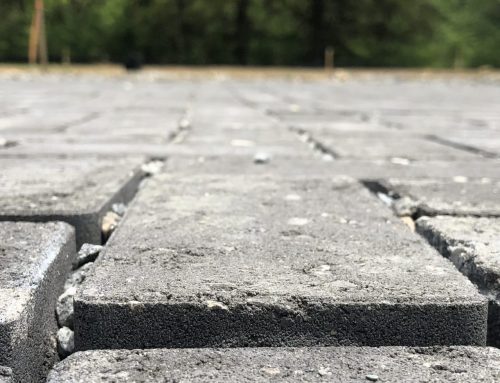As most of you probably experienced, last winter’s historic snowstorm Jonas, aka Snowzilla, was massive. In fact, it was the largest snowfall ever recorded in Maryland, at 29.2 inches (1). Baltimore County alone spent $9.4 million to clean up after Snowzilla, using over 21,031 tons of salt (2). This is not at all unique to this area; the U.S. sprinkles down around 137 pounds of road salt per person annually to melt ice that forms on roadways, airports, and walkways (3). This number is likely to keep rising as development continues, creating more impervious surfaces to de-ice. Studies by Baltimore City showed that in the Loch Raven reservoir, chloride concentrations increased over 300% from 1950s to 1970s, corresponding with a rapid increase in development (4). Loch Raven reservoir is one of three drinking water reservoirs that serve over 1.8 million people in the Baltimore metropolitan area.
Although salt is a natural chemical, too much of it can be a harmful thing. In recent years, streams in the Baltimore Reservoir system have been listed as impaired for chlorides, requiring a TMDL. A biostressor analysis of the streams feeding the Baltimore Reservoirs indicated that chlorides are a major stressor affecting biological integrity in this watershed. Road salts in waterways can kill frog and salamander eggs and increase the metal toxicity in lakes (5). In addition to environmental issues, salt can also be a public health concern. Although neither are regulated as contaminants, sodium and chloride levels in our drinking water have exceeded benchmark levels. Sodium in drinking water can increase health risks for sodium sensitive populations, such as infants/children, individuals with hypertension, elderly, African Americans, and individuals with renal disease (6).
A balance is needed between water quality protection and public safety concerns due to snow and ice. Reducing the use of road salts could be accomplished by adopting alternative methods, most of which are more costly and may still have an environmental impact. Research on the ability of constructed BMPs to reduce chloride and sodium from stormwater is limited. Data shows elevated chlorides in base flow, indicating that infiltration into the soil is not an effective means to remove salts from water.
In order to reduce the amount of salt entering the waterways, yet still keep the streets safe, best management practices are necessary to reduce the overall salt usage. Educating the salting crew about the amount of salt necessary for the weather condition can decrease excess salt use. The Maryland State Highway Administration holds a “Snow College” every year for new and experienced staff to provide the latest information on snow maintenance (7). New Hampshire started a voluntary program in 2013 where private salt companies certified by the Department of Environmental Services and the property owners who hire them are granted liability protection against damages from snow and ice conditions. This program is aimed to decrease the amount of “over-salting,” yet still maintain the necessary safety conditions.
CWP is working with the Baltimore Monitoring Council to update the Baltimore Reservoir System Monitoring Plan. The updated Monitoring Plan will improve quality assurance and quality control of the data collected, and be a cohesive document for all monitoring in the Baltimore Reservoir System. The changes will help improve the temporal and special resolution of water quality data to be used in water quality models. Chloride will be one of the chemicals regularly monitored at the reservoirs and their tributaries.
Sources:
- Dance, S. 2016. “Baltimore’s Biggest Snowfalls, Ranked”. Baltimore Sun.
- http://www.baltimorecountymd.gov/Agencies/publicworks/highways/stormdata.html
- Stromberg, J. 2014. “What Happens to All the Salt We Dump On the Roads?”. Smithsonian.com.
- Winfield, G.; Sakai, J.; Stack, W. n.d. “Road Salt Contamination of the Baltimore Metropolitan Reservoirs”. City of Baltimore DPW. Presentation.
- Frederick, R.; Goo, R. 2006. “Deicers- Water Resource Threat”. US EPA. Presentation.
- Binetti, V. 2006. “Road De-Icers: Drinking Water Standards and Consumer Concerns”. US EPA Region III. Presentation.
- Poorman, L. 2013. “Cutting Down on Salt”. MDE. 6:1
 Carol Wong is a Water Resources Engineer at the Center for Watershed Protection. She is a Maryland native and joined the Center in August, 2014. Carol graduated with her B.S. in Mechanical Engineering from the University of Maryland and her M.S. in Environmental Engineering from Stanford University. Prior to joining the Center, Carol worked for the private sector as a consultant, managing environmental research and development projects. She is also a proud alumni of the Chesapeake Conservation Corps. Carol has experience in program management, bioretention research, water resources, and water quality monitoring. In her free time, she likes to cook, eat, hike, rock climb, and kayak.
Carol Wong is a Water Resources Engineer at the Center for Watershed Protection. She is a Maryland native and joined the Center in August, 2014. Carol graduated with her B.S. in Mechanical Engineering from the University of Maryland and her M.S. in Environmental Engineering from Stanford University. Prior to joining the Center, Carol worked for the private sector as a consultant, managing environmental research and development projects. She is also a proud alumni of the Chesapeake Conservation Corps. Carol has experience in program management, bioretention research, water resources, and water quality monitoring. In her free time, she likes to cook, eat, hike, rock climb, and kayak.






